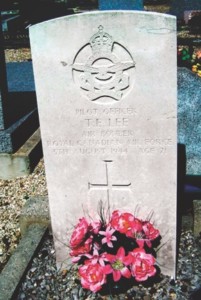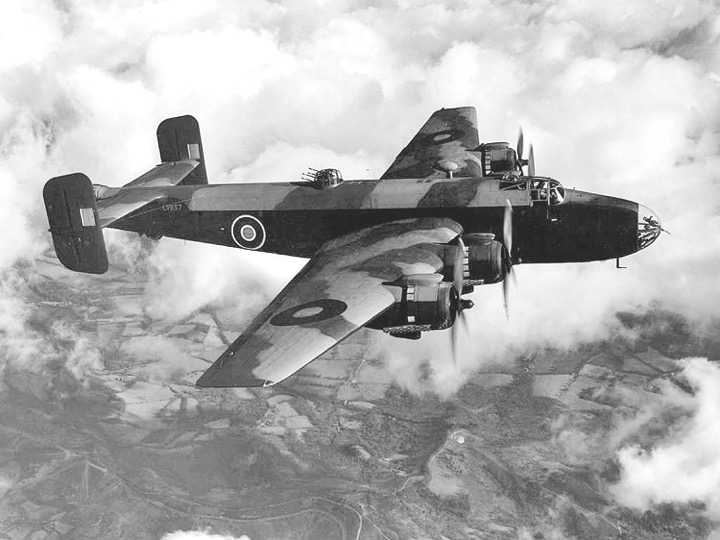Tom Slater and St. Amand, special to The Sarnia Journal
The fallen soldier was Sarnia’s Thomas Edwin Lee and his public funeral, held against German orders, is a poignant reminder that acts of compassion can occur even amid the horrors of war.
In 1941, Thomas Lee enlisted in the RCAF and left behind his widowed mother Irene and four siblings.
The SCITS student left for the United Kingdom early in 1943 and a year later Irene would learn her son has been promoted to Flight Sergeant. Eventually, Thomas Lee became a member of the RCAF #425 Alouette Squadron, holding the rank of Pilot Officer-Bomb Aimer.
On Aug. 5th, 1944, Lee was still with the 425th aboard a Halifax bomber on a massive daytime air raid over France. Their goal was to destroy a sizable cache of V-1 bombs the Germans had stored in stone quarries near St. Leu D’Esserent.
A single V-1 was capable of dropping a ton of cruise missile explosives, so the Allies were racing to destroy them before the Germans could use them.
It was Thomas Lee’s 26th operation and, sadly, his last.
His Halifax was shot down and crashed in a forest near Chantilly. The following December, Irene Lee received a telegram confirming Thomas was now “for official purposes, presumed dead.”

The remains of Thomas Lee lie in Chantilly (St. Pierre) Communal Cemetery, Oise, France.
Canadian Virtual War Memorial photo
The Lee family was devastated. Proud, undoubtedly, that 21-year-old Thomas had died for his country but crushed by the loss. The final official acknowledgment was a War Service Gratuity cheque of $582.38 that Irene received as compensation.
Then, just before Christmas in 1945, Mrs. Lee received more news about her late son. A letter arrived at her Christina Street home from a Mrs. T. J. Kirby, a complete stranger. In it were a crucifix and news about her son’s funeral.
Mrs. Kirby, now back in Ohio, had witnessed the funeral and knew Irene’s pain for “the only wound that never heals is that in a mother’s heart.”
For that reason alone she had penned the letter.
Lee had died at a hospital in Chantilly and the hospital nuns had placed a crucifix on his body, the same crucifix they entrusted to Mrs. Kirby.
The sisters then spread the word that a funeral was being held for the young man at the hospital chapel. “Your son was the only one among all those martyrs to have a special funeral,” Irene read. “There must have been something special about him.”
The response was overwhelming. So many villagers, including the mayor, crammed into the chapel that mourners had to stand on the surrounding grounds.
Many brought flowers, and the good sisters used them to decorate the chapel.
After the final hymn, the chaplain blessed the casket, draped in the folds of a French flag, and attempted to say a few words for the young Canadian airman. But he was overcome with emotion and his voice trailed away.
Equally stirring, said Mrs. Kirby, was “the emotion and profound respect of the people … there was not a mother there who was not thinking of that boy’s mother and weeping with her.”
The Germans had permitted a full Catholic funeral, providing no one went to the cemetery.
But in defiance the mourners solemnly formed a procession, taking two hours to reach the cemetery just outside town. Each risked his or her life to honour the fallen airman from Sarnian.
Seventy-two years have passed. Today, Thomas Lee’s grave looks like any other soldier’s, but the circumstances of his passing were a glimmer of humanity in the darkness hours of war.


